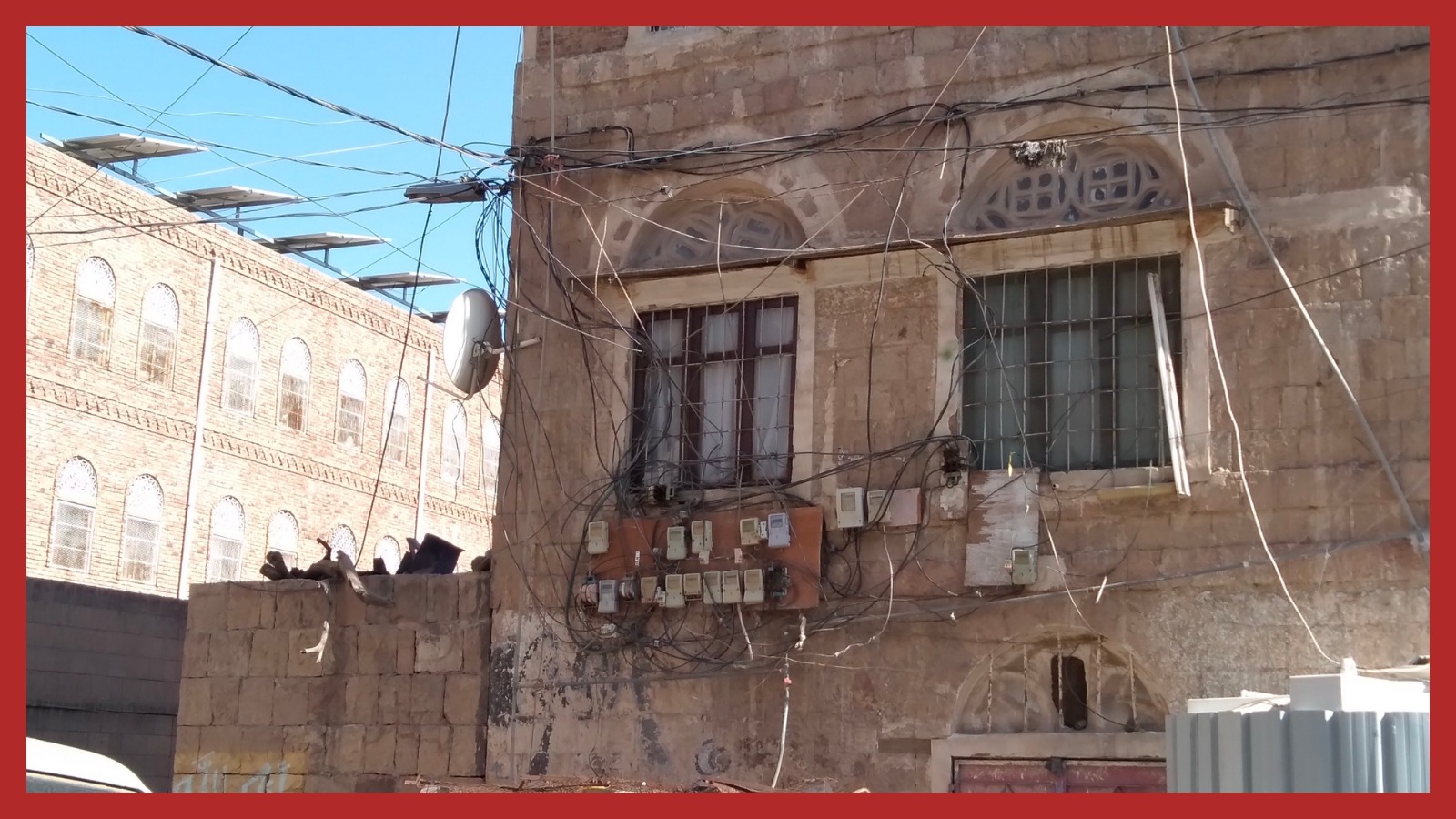Yemen: The General Organization for the Preservation of the Historic Cities of Yemen (GOPHCY) is taking measures to remove electrical generators from Old Sanaa
A week after ARIJ published the investigation “Time Bombs… Generators threaten inhabitants of Old Sanaa and its landmarks”, The General Organization for the Preservation of the Historic Cities of Yemen (GOPHCY) (affiliated to the Ministry of Culture) sent official memorandums to a number of local authorities, demanding them to take the necessary measures to remove the generators from the city.
The memorandums, copies of which were obtained by ARIJ, stated that “the electricity generators operating in old Sana’a lead to the deformation of the city’s houses and causing damage to them”, and that “this phenomenon has made Sana’a at risk of being removed from the World Heritage List.”
The GOPHCY noted that it had used all administrative and legal means to limit the expansion of generators and not bring them into the vicinity of old homes. In a memorandum sent to the head of the Public Funds Prosecution Appeal in the Capital Secretariat, the GOPHCY requested the issuance of parliamentary orders approving the removal of all generators from Old Sana’a because “its traditional, archaeological homes cannot withstand the vibrations resulting from them, as well as the threat to the health of neighbors from toxic exhausts, based on the articles of Conservation Law No. (16) of 2013”.
In another memorandum to the Director General of the Electricity Corporation, the GOPHCY demanded that electricity to all houses and neighborhoods of the old city of Sana’a become of reduced prices, to encourage subscribers not to deal with commercial generators located in the city.
The GOPHCY sent copies of the memorandums to the Presidency of the Republic and the Ministry of Electricity.
In return, the head of the Antiquities Prosecution, Judge Abu Bakr Al-Ansi, told our colleague Noura Al-Thafiri, who wrote the investigative report, that “a case has been filed and legal measures have been taken in this regard.”
The investigation, which was published late last January, revealed that in the old city of Sana’a there are 11 electricity stations, which are owned by merchants and “influential” people, and which fail to meet the most basic requirements of public safety. All that happens within a system of negligence and overlapping of powers between eight government agencies. The result is that residents face the risk of death, injury and material loss, from explosions or fires that could happen at any moment. Such dangers also increase the likelihood that Sana’a could lose its global status because of the increasing disfigurement of the city, which has caused it to be listed by the UNESCO World Heritage Committee on the List of World Heritage in Danger.








